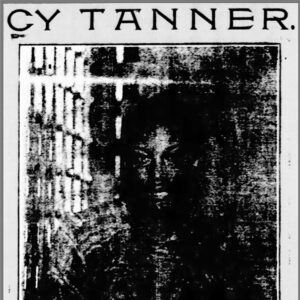 Cy Tanner Execution
Cy Tanner Execution
Entry Category: Law - Starting with T
 Cy Tanner Execution
Cy Tanner Execution
Tanner, Sy (Execution of)
Tatum, Luke (Execution of)
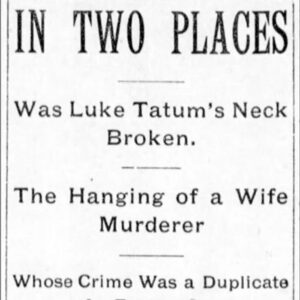 Luke Tatum Execution Article
Luke Tatum Execution Article
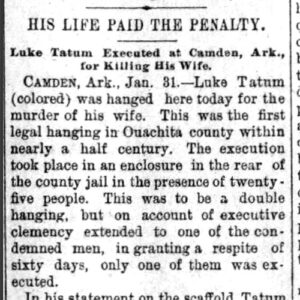 Luke Tatum Execution Article
Luke Tatum Execution Article
 Luke Tatum Execution Story
Luke Tatum Execution Story
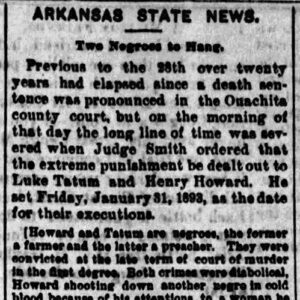 Luke Tatum Execution Story
Luke Tatum Execution Story
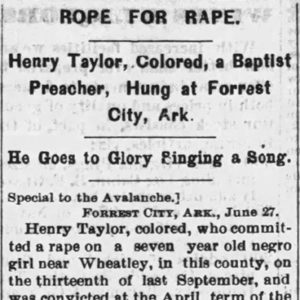 Taylor Execution Article
Taylor Execution Article
Taylor Sisters (Lynching of)
Taylor, Henry (Execution of)
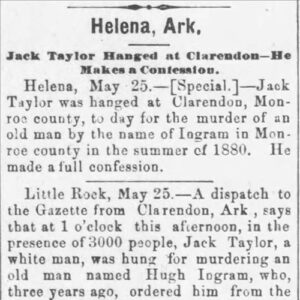 Jack Taylor Execution Article
Jack Taylor Execution Article
Taylor, Luther (Execution of)
 Marion Taylor
Marion Taylor
Taylor, Marion
Tebbetts, Jonas March
Tee-o-lit-es (Execution of)
 Tee-o-lit-es Execution Article
Tee-o-lit-es Execution Article
Templeton, George (Lynching of)
Texarkana Moonlight Murders
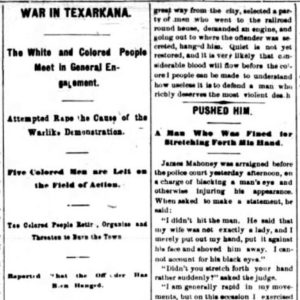 Texarkana Race Riot Article
Texarkana Race Riot Article
 Texarkana Regional Correction Center
Texarkana Regional Correction Center
 Texarkana U.S. Courthouse
Texarkana U.S. Courthouse
Thomas, Henry Andrew “Heck”
Thomas, Wade (Lynching of)
Thompson, Alex (Lynching of)
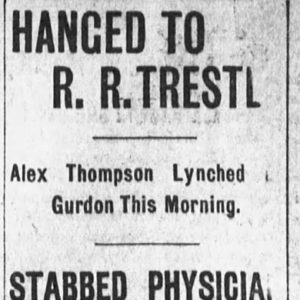 Alex Thompson Lynching Article
Alex Thompson Lynching Article
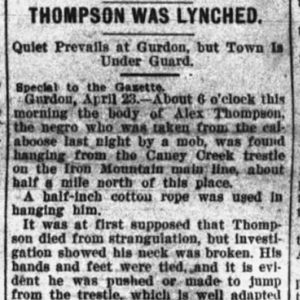 Alex Thompson Lynching Article
Alex Thompson Lynching Article
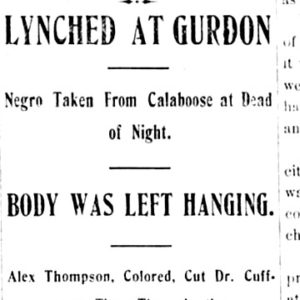 Alex Thompson Lynching Article
Alex Thompson Lynching Article
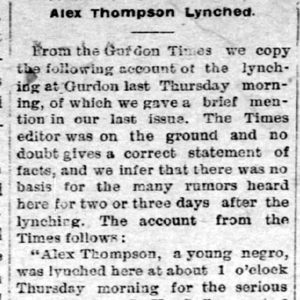 Alex Thompson Lynching Article
Alex Thompson Lynching Article
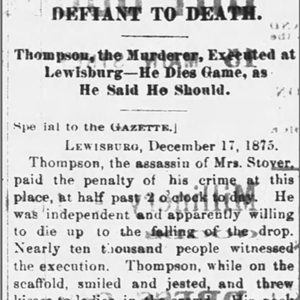 W. B. Thompson Execution Story
W. B. Thompson Execution Story
Thompson, William B. “Buck” (Execution of)
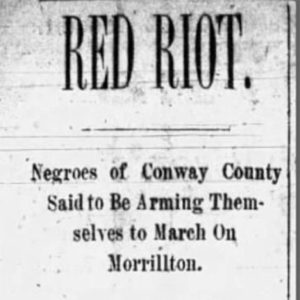 Flanigan Thornton Lynching Article
Flanigan Thornton Lynching Article
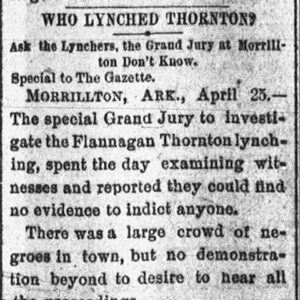 Flanigan Thornton Lynching Article
Flanigan Thornton Lynching Article
Thornton, Flanigan (Lynching of)
 Ray Thornton
Ray Thornton
 Ray Thornton
Ray Thornton
 Bill McCuen and Ray Thornton
Bill McCuen and Ray Thornton
Thornton, Raymond Hoyt (Ray), Jr.
Three Guardsmen
Thurairajah v. City of Fort Smith
Tillman, John Arthur
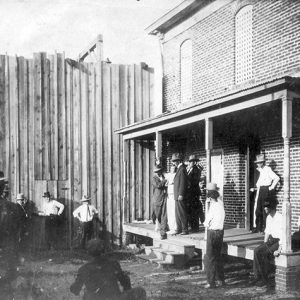 John Arthur Tillman
John Arthur Tillman
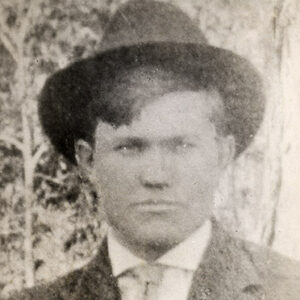 John Arthur Tillman
John Arthur Tillman
Tobacco Settlement Proceeds Act of 2000
Toll (Lynching of)
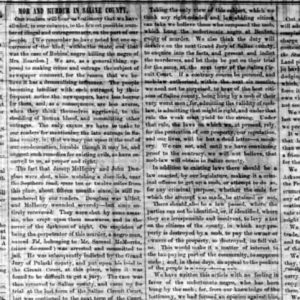 Toll Lynching Story
Toll Lynching Story
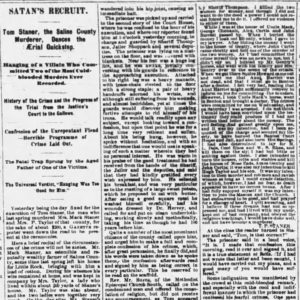 Tom Staner Execution Story
Tom Staner Execution Story
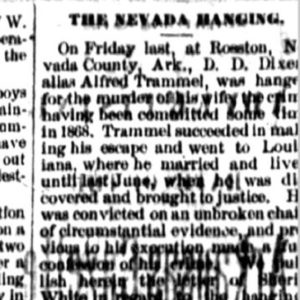 Trammell Execution Story
Trammell Execution Story
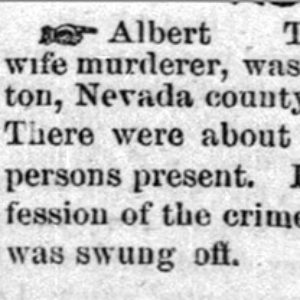 Trammell Execution Story
Trammell Execution Story




